因應日本生態旅館協會的解散,全球永續旅遊委員會(GSTC)認可的《永續環境旅宿國際標準》(ESAIS)已於2017年底將其所有權利轉讓給亞洲生態旅遊聯盟(Asian Ecotourism Network – AEN)。AEN對原標準進行了修訂,以反映:1)配合更新的GSTC產業標準而有所修改;2)適應亞洲生態旅遊的環境,並刪除了與其他亞洲國家無關的日本元素。雖然大多數標準是必要條件,但有些則標示為選擇性條件,並在表中用灰底呈現。更新後的《亞洲生態旅遊旅宿業標準》於2019年6月24日發布,共有六大準則,分別為:永續性、餐飲、廢棄物管理與回收、能源與水、綠色採購及環境議題。
臺灣生態旅遊協會是亞洲生態旅遊聯盟的團體會員,協會理事吳清墩也是亞洲生態旅遊聯盟的理事。基於推廣華人地區旅宿業環保作為,降低觀光業對環境資源的耗用並友善所在地的社區,我與吳理事翻譯該標準為中文版,日前也已放在AEN網站供下載。希望有更多華人經營的大小型旅宿業願意投入綠色旅宿的行列,並以此標準檢視是否達到理想的永續經營管理標準。如有翻譯錯誤或不妥之處,敬請不吝指正。
底下是中英對照全文,請參考:

Asian Ecotourism Standard for Accommodations (AESA)
亞洲生態旅遊旅宿業標準
July 24, 2019
2019年6月24日
翻譯:賴鵬智
審訂:吳清墩
Ⅰ SUSTAINABILITY 永續性
1) EFFORTS MADE ON ENTIRE FACILITY 在所有場域與設施的努力
|
|
AESA Criteria 準則 |
Performance Indicator(s) 績效指標 |
|
1.1-1 |
Do you have a long-term sustainability system in a written form that addresses environmental, social, cultural, economic, quality, human rights, health, safety, risk and crisis management issues and drives continuous improvement suitable to its size and scale? 貴場所是否有書面的長期永續管理系統,以解決環境、社會、文化、經濟、品質、人權、健康、安全、風險和危機管理問題,並推動適合其規模和尺度的持續改進? |
l The Sustainability Management System is clearly documented. 永續管理系統有翔實的紀錄
l The SM System covers environmental, social, cultural, economic, quality, human rights, health, and safety issues. 永續管理系統涵蓋環境、社會、文化、經濟、品質、人權、健康與安全等面向。
l The SM System includes consideration of risk and crisis management. 永續管理系統包括風險和危機管理
l Documentary evidence shows implementation of the SM system. 有文件資料呈現永續管理系統的執行情形
l The SM System includes a process for monitoring continuous improvement in sustainability performance. 永續管理系統應能審視永續績效的持續改進
|
|
1.1-2 |
Do you know of any natural and cultural impact(s) by your facility and try to minimize it (them) by making plans or targeted reductions? 貴場所是否知道設施對自然和文化影響的程度,並制定計畫針對問題改善,試著將影響降到最小? |
The categories of impacts are listed and plans are made and executed to minimize them. 列出影響的因素,制定和執行計畫,以儘量減少這些影響。 |
|
1.1-3 |
Do you have a clear responsibility management on environmental issues? 貴場所對環境管理有明確的責任區分嗎? |
Person(s) or positions are appointed with clear responsibility on the environmental issues 指定環境管理專責的人員或職務
|
|
1.1-4 |
Do you maintain the up-to-date environmental laws and policies that apply to your facility locally, nationally and internationally? 貴場所是否時時掌握適用於本地、國內和國際設施的最新環境法律和政策? |
Check annually where possible, or keep the date last checked to maintain updated. 儘可能每年檢視一次,或保留最後一版的最新資料。 |
|
1.1-5 optional 選擇性 |
Do you monitor and verify your sustainability policy once a year or more to make future actions more effective? 貴場所是否每年一次或多次管控和檢視永續管理政策,以使未來的作為更有成效? |
Monitor and verify the sustainability policy if it is updated, and keep the date when actions are made. 管控並確認該永續管理政策是否已更新,且記錄更改日期。 |
|
1.1-6 |
Do you publicly display your sustainability policy? 貴場所是否公開宣示永續管理政策? |
Display or make available sustainability policy where visible, such as reception area and rooms. 在接待處和客房等可見的地方顯示或提供易於取閱的永續管理政策。
|
|
1.1-7 |
Do you train all your employees on the sustainability issues once a year or more often to be able to fully comply with its requirement? 貴場所是否每年一次或多次對所有員工進行永續議題的培訓,讓他們可完全符合相關要求? |
Keep the records of the date and the names of the person(s) trained, preferably with the contents of the sustainability issues. 保存受訓日期和受訓人員姓名的紀錄,最好附上有關永續議題的培訓內容。 |
|
1.1-8 |
Do you respect labor rights, provide a safe and secure working environment, and pay employees at least a living wage? 貴場所是否尊重勞工權利,提供安全可靠的工作環境,並支付員工至少可應付最低生活費的薪水? |
File your latest national/regional labor rights and minimum wage. Ask your employees if the safe and secure working environment are offered and for improvement. 明示最新的國家/區域勞工權利和最低工資。詢問員工是否認為貴場所已提供了安全可靠的工作環境,並據以改善。 |
|
1.1-9 |
Do you maintain the up-to-date health, safety, human rights, risk and crisis management issues, and labor laws and policies that apply to your facility? 貴場所是否保持關注最新的健康、安全、人權、風險和危機管理議題,以及勞動法律和政策? |
Keep a record of when last updated. 保存最新的相關議題資料 |
|
1.1-10 |
Do you offer all your employees regular training, guidance, experience, and opportunities for advancement regarding their roles and responsibilities including human rights and risk/crisis management issues? 貴場所是否為所有員工提供有關其角色和職責(包括人權和風險/危機管理議題)的定期培訓、指導、經驗和晉昇機會? |
Keep a record of training/guidance/experience/opportunities history. 保存相關培訓、指導、經驗和晉昇的紀錄 |
|
1.1-11 |
Are your staff engaged with development and implementation of the sustainability management system? 貴場所的員工是否參與了永續管理系統的研議和實施? |
Keep a record of duty and responsibility allocation. 記錄職責分配 |
|
1.1-12 |
Are your promotional materials and marketing communications accurate and transparent with regard to the operation and its products and services, including sustainability claims and do not promise more than can be delivered? 貴場所的宣傳材料和行銷傳播是否確實、透明地介紹了業務及其產品和服務,包括永續性的要求,並且沒有言過其實? |
Look for third-party sets of eyes to check for accuracy and transparency. 聘請客觀第三方來檢視確實性和透明度 |
|
1.1-13 |
[Destination engagement] 〔參與旅遊目的地的永續管理〕 Is the facility involved with sustainable tourism planning and management in the destination, where such opportunities exist? 若有機會,貴場所是否參與了旅遊目的地的永續旅遊規劃和管理? |
Name the destination organization(s) involved and the description of responsibility. 列出貴場所參與旅遊目的地相關組織名稱及其組織責任 |
2) EFFORTS MADE ON EACH CRITERION 對每項準則所做的努力
|
|
AESA Criteria 準則 |
Performance Indicator(s) 績效指標 |
|
1.2-1 |
FOOD AND BEVERAGE 餐飲 Do you monitor the food and beverage waste by volume to reduce and recycle by setting concrete targets and waste management plans? 貴場所是否設定廢棄物管理計畫和具體目標,以監控餐飲廢棄物減少與回收利用的數量? |
l Depending on the volume, monitor F&B waste daily or at least monthly. 根據數量,每天或至少每月一次監控餐飲廢棄物。 l Know the percentage of the volume being recycled and/or composted. 了解回收和/或堆肥的百分比 l Create and update waste management plan regularly. 制定並定期更新廢棄物管理計畫 |
|
1.2-2 |
WASTES OTHER THAN FOOD AND BEVERAGE 餐飲之外的廢棄物 Do you monitor the types and amount of waste other than food and beverage (i.e. packaging and room trash) to reduce and recycle by setting concrete targets and waste management plans? 貴場所是否設定廢棄物管理計畫和具體目標來監控餐飲之外(如包裝與室內垃圾)的廢棄物型態和數量,以減少並回收利用? |
l Items like amenity and gift packaging, room trash, bottles and cans, batteries, soaps, etc. are monitored for its amount. 監控生活用品和禮品的包裝、房間垃圾、瓶罐、電池、肥皂等物品的數量。 l Separated by types and recycling/upcycling are maximized. 按類型分類,儘量回收/再利用。 l Create and update waste management plan regularly. 制定並定期更新廢棄物管理計畫 |
|
1.2-3 |
ENERGY AND WATER 能源與水 Have you conducted an energy audit and set concrete plans and targets to reduce energy consumption (electricity, heavy oil, gas, etc.)? 貴場所是否監控能源使用狀況並制定具體計畫和目標以減少消耗(電力、重油、天然氣等)? |
l Create an inventory list of all electric appliances by rooms and buildings including the number of appliances, consumption kWh, and the operation hours. The same list goes to oil, gas, etc. 按房間和建築物列出所有電器的清單,包括電器數量、消耗了幾度電(kWh:功率為1kW的設備在1小時內產生或消耗的電能)和運行時間。石油、天然氣等也要有使用量清單。 l Set concrete plans and targets for reduction. 制定具體的節能計畫和目標 |
|
1.2-4 |
Do you assess the water risk and know the amount of water consumption and monitor treated water quality to ensure appropriate concrete targets and plans are put in place to reduce volume and alleviate contamination? 貴場所是否評估水資源匱乏的風險,瞭解用水量,並檢測處理後的水質,確保有相應的具體指標和計畫,以減少用水量,減輕污染? |
l In areas of high water risk, context-based water stewardship goals are identified and pursued. 在水資源匱乏高風險的地區,確立並進行基於環境特性的水資源管理目標。 l Know the sources and volume of consumption of water including tap water, diverted river, wells, and rain catchment and where they end up either treated or untreated. 瞭解水的來源和消耗量,包括自來水、河水、井水和收集來的雨水,以及它們最終在哪裡被處理或沒有處理。 |
|
1.2-5 |
GREEN PURCHASING AND CHEMICALS 綠色採購和化學品 Do you have a green purchasing policy that preferentially chooses environmentally sound, local, and fair trade products and suppliers whenever these are available, and of sufficient quality and reduces purchasing volume by setting concrete targets and plans? 貴場所是否有綠色採購政策,若有可能,就優先選購對環境無害、在地生產和公平貿易的產品和供應商,並制定具體的計畫和目標,確保品質並減少採購量(以免浪費)?
|
Create a green purchasing policy with concrete targets and plans. Items are suggested in V, but also include ones that are unique to your area. (i.e. chopsticks and straws) 制定有計畫和具體目標的綠色採購政策。可以參考準則V的採購品項與原則,但不同國家可能有不同的用具習慣,就依各自所在地的需求來考量採購品項,當然也必須符合綠色採購規範。(如:有的國家規定不使用一次性的筷子和吸管) |
|
1.2-6 |
Do you know the amount of chemicals (Herbicides, Insecticides, Cleaning products, etc.) and set concrete targets and plans to reduce the volume of chemical used and ensure minimal environment pollution? 貴場所是否清楚所使用化學藥劑(除草劑、殺蟲劑、清潔產品等)的數量,並制定了減少化學藥劑使用量的計畫和具體目標,確保對環境的污染降到最少? |
Create a list of chemicals used and their purpose. Set targets to reduce the consumption and/or find the non-chemical alternatives. 編製一份所使用化學藥劑及其用途的清單。設定減少使用量的目標,並尋找非化學成分的替代品。 |
3) INFORMATION DISCLOSURE AND SUSTAINABILITY COMMUNICATION 訊息披露與永續管理傳播
|
AESA Criteria 準則 |
Performance Indicator(s) 績效指標 |
|
|
1.3-1 |
INFORMATION DISCLOSURE 訊息披露 Do you provide information on sustainability policy, actions and performance to stakeholders including customers and suppliers, and seek to engage their support? 貴場所是否向包括客戶和供應商在內的權益相關者提供有關永續管理政策、作為和實施成效的訊息,並尋求他們的支持、配合? |
Sustainable policy is made publicly available and the actions based on the policy are also listed. 發布永續管理政策,並列出行動計畫。 |
|
1.3-2 |
CUSTOMERS 遊客 Do you have a system to effectively monitor and reflect the customer feedback and take corrective action? 貴場所是否有一套可以有效稽核和反映遊客意見而採取改善措施的機制? |
Showcase systems remedying sustainability issues within your premises. 貴場所有一套能呈現永續管理缺失並予改善的機制 |
|
1.3-3 Optional 選擇性 |
Do you offer or facilitate access to programs/tours related to local ecotourism? 貴場所是否提供或推介遊客參加當地生態旅遊的專案或遊程? |
Understand the concepts of ecotourism and offer ecotourism programs either directly or indirectly. Look into other responsible CBT and local tours as an additional option. 讓遊客了解生態旅遊的概念,並直接或間接提供生態旅遊行程。也可推介其他負責任的社區小旅行和在地遊程。
|
|
1.3-4 Optional 選擇性 |
Do you offer back of the house facility tours to showcase sustainability management and practices? 貴場所是否提供室內設施參觀,以展示永續管理和實務內容? |
Demonstrate your sustainable practices by offering the tour. 透過遊程來展示貴場所的永續管理實務內容 |
Ⅱ FOOD AND BEVERAGE 餐飲
1) REDUCTION AND RECYCLING OF FOOD WASTE 減少和回收利用廚餘
|
AESA Criteria 準則 |
Performance Indicator(s) 績效指標 |
|
|
2.1-1
|
Do you practice effective procurement? 貴場所是否採行精準(不浪費食材)採購? |
Make effective purchasing and procurement that contributes locally and demonstrate good responsible practices. 實施精準採購,對當地有所貢獻,並表現出良好的負責任做法。 |
|
2.1-2 |
Do you have a system in place managing leftovers and food waste? 貴場所是否有一套管理剩菜和廚餘的方法? |
Make a good use of food waste by composting and/or animal feeding, etc. to turn it into a resource. 透過堆肥和/或飼養動物等方式充分利用廚餘,將其轉化為資源。 |
|
2.1-3 Optional 選擇性 |
Do you drain water or dehydrate food waste to reduce volume? 廚餘是否排水或脫水以減少體積? |
Reduce the volume and weight of food waste by draining and dehydrating. 透過排水和脫水以減少廚餘的體積和重量 |
|
2.1-4 |
Do you effectively reuse or recycle cooking oil? 貴場所是否有效地重複利用或回收食用油? |
Where available, use the used cooking oil as fuel and/or soap. 如果可行,將用過的食用油作為燃料和/或肥皂。 |
|
2.1-5 |
Do you have a policy on reducing disposable materials? 貴場所是否有減少一次性用品的政策? |
Is there a policy that covers on straws, spoons, chopsticks, and take-away containers? Avoid single-use plastics. 是否有涵蓋吸管、湯匙、筷子和外賣容器的環保政策?避免使用一次性塑膠用品。 |
2) FOOD PURCHASE 採購食品
|
AESA Criteria 準則 |
Performance Indicator(s) 績效指標 |
|
|
2.2-1 |
Do you preferentially purchase organic food and low or chemical-free agricultural produce? 貴場所是否優先採購有機食品以及低或無化學成分的農產品? |
Make a list of your suppliers and check with them regularly to help realize your preferences. 列出貴場所的供應商清單,並定期與他們檢討,好讓他們了解你的優先選項。 |
|
2.2-2 |
Do you prioritize purchase of local, fair trade, and in-season food whenever these are available and of sufficient quality? 如果品質良好並可獲得,貴場所是否會優先採購在地生產、公平貿易和當季的食材? |
With a list of your all purchased goods, find out which are procured locally, fair trade, or in-season. Supportive data such as the percentage per month is considered well-monitored. 有了採購清單,就可以知道哪些商品是在當地採購的,哪些是透過公平貿易的,哪些是當季的。每月統計這些類別的百分比,就是對綠色採購良好的稽核。 |
Ⅲ WASTE MANAGEMENT AND RECYCLING 廢棄物管理與回收
1) ROOM SERVICE 客房服務
|
AESA Criteria 準則 |
Performance Indicator(s) 績效指標 |
|
|
3.1-1 |
Do you minimize your complimentary disposable amenity set? 貴場所是否儘量不提供免費的一次性日用備品? |
List your complimentary give-away amenity articles. i.e. toothbrush, soap, comb 列出貴場所免費提供的一次性日用備品,如牙刷、肥皂、梳子……等 |
|
3.1-2 |
Do you minimize packaging? 貴場所是否儘量減少日用備品的包裝? |
No double-wrapping of amenity set or on the non-required materials. 日用備品或非必要物品不雙重包裝 |
|
3.1-3 |
Do you encourage guests to bring their own toiletries? 貴場所是否鼓勵客人自備盥洗用品? |
Toothbrush, shaver, etc. 牙刷、刮鬍刀……等 |
|
3.1-4 |
Do you use refillable dispenser/bottles avoiding disposable containers? 貴場所是否使用可重複裝填的按壓瓶/瓶罐以避免使用一次性容器? |
Shampoo, hair conditioners, body soaps, shower gels, etc. 洗髮精、潤髮乳、沐浴乳劑……等 |
|
3.1-5 |
Do you have a notice giving the guest choice of not to have bedding and towel changes for multi-day guests? 貴場所是否告知客人,他們若停留多日,可以選擇不更換床上用品(如床單、枕頭罩、被套)和毛巾? |
The turn down service can be displayed in a room. Encourage it at the check-in or upon booking both written and orally where possible. 房間應擺置對多日住客不換床上用品的告示。在客人辦理入住手續時告知,或在訂房時以書面和口頭方式告知這項環保政策。 |
|
3.1-6 |
Do you separate and recycle carried-in waste? 客房內垃圾是否有做分類與資源回收? |
Train housekeeping staff for separation or provide multiple-bins in the room. Recycle them as much as possible. 訓練房務人員進行廢棄物分類,或在房間提供多個垃圾筒。儘可能資源回收。 |
|
3.1-7 |
Do you restore and refurbish guestroom furniture (bed, chair, table, etc.) for long-term use? 貴場所是否修復和翻新客房家具(如床、椅、桌……等),以延長使用壽命? |
Keep photos or on the inventory list. 保存相片或登記在財產目錄 |
2) ADMINISTRATIVE AREA/ COMMON AREA/ STORE 行政區域/公共區域/賣場
|
AESA Criteria 準則 |
Performance Indicator(s) 績效指標 |
|
|
3.2-1 |
Do you separate and recycle papers? 貴場所是否有回收紙類? |
Copy paper, newspaper, magazine, cardboard 回收影印紙、報紙、雜誌、紙板等 |
|
3.2-2 |
Do you segregate recyclable materials? 貴場所是否有做廢棄物分類回收? |
Segregate plastic PET bottles, drink cans, glass bottles, and other containers into categories and recycle them where feasible. 將塑膠PET瓶、飲料罐、玻璃瓶和其他容器分類並回收 |
|
3.2-3 |
Do you use double-sided photocopying? 貴場所是否使用雙面複印或列印? |
The same goes for the facsimile machine. 傳真機也一樣 |
|
3.2-4 |
Do you minimize wrapping at store(s) or gift shops within your facility? 貴場所是否儘量減少商店或禮品店的販售包裝? |
Encourage guest to bring their own bag if not provide one that is locally produced and not made of plastic. 如果沒能提供當地生產且不是塑膠製成的提袋,請鼓勵客人自備提袋。 |
|
3.2.5 |
Do you avoid selling, trading, or displaying historical and archeological artifacts except as permitted by local and international law? 除非當地和國際法律允許,貴場所是否避免出售、交易或展示歷史和考古文物? |
Check the artifacts on the premises that are legally possessed. 確認合法擁有所存的文物 |
3) ENTIRE AREA 整個場域
|
AESA Criteria 準則 |
Performance Indicator(s) 績效指標 |
|
|
3.3 |
Do you have a solid waste management plan and is it implemented? 貴場所是否有固體廢棄物管理計畫並已實施? |
Separate and dispose of fluorescent lamps, LED bulbs, batteries properly. Dispose of refrigerators and HVACs with a proper route of extracting HCFC. 妥善分類和處理螢光燈、LED燈泡、電池,按照抽取氫氯氟碳化物的正確方法處理冰箱和空調系統。 |
|
3.4 |
Is the provision of your basic sanitation system non-polluting? 衛生系統是否不污染環境? |
It imposes no adverse effect by any residual waste to the environment and local population. 衛生系統殘留物不會對環境和當地居民造成不良影響 |
(譯註:英文原稿編號就是3.3與3.4,沒有3.1與3.2。)
Ⅳ ENERGY AND WATER 能源與水
1) HEAT SOURCE/HEAT TRANSFER 熱源/傳熱
|
AESA Criteria 準則 |
Performance Indicator(s) 績效指標 |
|
|
4.1-1 |
Do you generate heated water and/or power by utilizing natural energy and alternative sources such as solar, wind, hydro, and geothermal energy? 貴場所是否利用自然能源和太陽能、風能、水能和地熱等替代能源來產生熱水和/或電力? |
List the methods of power generation other than grid electricity and oil(diesel) generator. 列出除了電網電力和石油(柴油)發電以外的發電方式 |
|
4.1-2 |
Are your sources and types of energy indicated and steps are taken to minimize overall consumption? 貴場所是否標示了能源來源和類型,並已採取減少耗能的措施? |
Indicate the percentage over all consumption versus natural/alternative energy by sources and types. List what actions are being made to minimize the consumption. 標示自然/替代能源在所有能源來源和類型的百分比。列出正在努力減少耗能的措施。 |
|
4.1-3 Optional 選擇性 |
Do you take preventative measures to minimize negative effects of the provision of basic energy services to neighboring communities? 貴場所是否採取預防措施,儘量減少對周邊社區使用基本能源服務的負面影響? |
Compare with the average consumption with your neighbors or use the national/regional data available per person or per area. 與鄰近社區的平均能源消耗量相比,或比較國家/地區的每人或每個地區的統計資料。 |
2) HVACs (Heaters, Ventilators, and Air Conditioners) 空調系統(暖氣機、通風機和空調)
|
AESA Criteria 準則 |
Performance Indicator(s) 績效指標 |
||
|
ENTIRE ESTABLISHMENT 整個機構 |
|||
|
4.2-1 |
Do you try to improve building insulation? 貴場所是否嘗試改善建築物的隔熱性能? |
Install double door, pivoted door, double-glazed glass, insulated sash window, vegetated wall/rooftop etc. 安裝雙扇門、旋轉門、雙層玻璃、隔熱推拉窗、植栽牆/屋頂等。 |
|
|
4.2-2 |
Do you regulate room temperature in office and back of house by controlling heating, ventilating and air-conditioning with your national guidelines? 貴場所是否按照國家標準來控制暖氣、通風和空調以調節辦公室和客房以外的房間室溫? |
i.e. Japanese public buildings, 28C for summer months, 24 in Malaysia and Indonesia, 25 in Laos and Thailand 如日本的公共建築在夏季應設定為28℃,馬來西亞和印尼為24℃,寮國和泰國為25℃。 |
|
|
GUESTROOM 客房 |
|||
|
4.2-3 選擇性 |
Does each guestroom have a control for air conditioning/heating? 每間客房是否有空調/暖氣的控制裝置? |
Thermostat is installed in each room. 每個房間都裝有溫度調節器 |
|
3) LIGHTING 照明
|
AESA Criteria 準則 |
Performance Indicator(s) 績效指標 |
|
|
4.3-1 |
Have you changed from incandescent light bulbs to CFLs(Compact Fluorescent Lamp) or LEDs? 貴場所是否已將白熾燈泡更換為省電燈泡(CFL)或LED燈? |
l Installation of CFLs or LEDs comprise more than 20% of total lighting fixture. (engaged) 安裝的省電燈泡或LED燈占照明燈具總數的20%以上(基本要求) l Installation of CFLs or LEDs comprise more than 80% of total lighting fixture. (pass) 安裝的省電燈泡或LED燈占照明燈具總數的80%以上(合格) |
|
4.3-2 Optional 選擇性 |
Do you have override control device to reduce energy consumption of guestroom(s) not in use? 貴場所是否在客房裝設沒人時能自動關閉房間電源的斷電設施? |
A simple device to shut off the energy consumption or manual control by staff is in place. 裝設自動斷電設施或由服務人員控制 |
|
4.3-3 |
Do you have dark sensor, occupancy sensor, and/or auto timer fitted in public area? 公共區域是否裝有感應器和/或自動定時器? |
List the number and the places of sensors installed. 列出安裝感應器的數量和位置 |
4) OTHERS on SAVING ENERGY 其他節能方法
|
AESA Criteria 準則 |
Performance Indicator(s) 績效指標 |
|
|
4.4-1 |
Do you periodically maintain equipment to maximize energy savings? 貴場所是否定期維護設備以儘量節省能源? |
Maintenance dates are documented on the inventory list. 在財產目錄中記錄設備維護日期 |
5) CO2 REDUCTION 減少排放二氧化碳
|
AESA Criteria 準則 |
Performance Indicator(s) 績效指標 |
|
|
4.5-1 |
Do you measure, calculate and reduce where possible the amount of significant greenhouse gas emissions of your facility from energy consumption using a comparison of the year you set? 貴場所是否逐年統計比較,並儘可能減少因使用能源而排放的溫室氣體? |
List the sources of greenhouse gas emissions and measure each amount where possible. i.e. electricity, gas, oil, waste volume(that get transported out) and compare with the previous year(s) and/or month(s) to reduce them. If possible, calculate the amount of greenhouse gas emission like CO2 per guest per month/year. 列出溫室氣體排放源(如電力、天然氣、石油、運出的廢棄物量),並儘可能統計其排放量,再與前一年度同期和/或上一個月進行比較,以減少排放量。若可能,則計算每人次每月/每年的溫室氣體(如二氧化碳)排放量。 |
|
4.5-2 |
Do you implement procedures to control and offset greenhouse gas emission as a way to achieve climate neutrality? 貴場所是否實施控制和抵消溫室氣體排放的做法,以實現氣候中和? |
List procedures and actions taken. 列出控制和抵消溫室氣體排放的流程及行動 |
|
4.5-3 |
Do you seek to reduce transportation requirements and actively encourage the use of cleaner and more resource efficient alternatives by customers, employees, suppliers and in its own operations? 貴場所是否尋求減少運輸需求,並積極鼓勵顧客、雇員、供應商在其自身業務中使用更潔淨和更省能源的替代品? |
Make an inventory list of transportation owned and outsourced including for employees, suppliers, etc. to help change to cleaner modes of transportation. 製作一份貴場所包括雇員及供應商等自營和外包的運輸者清單,以協助轉變為更潔淨的運輸方式。 |
6) SAVING WATER 省水
|
AESA Criteria 準則 |
Performance Indicator(s) 績效指標 |
|
|
4.6-1 |
Do you have water pressure regulator, water saving showerhead, sensor faucet etc. fitted to save overall consumption of water? 貴場所是否安裝了水壓調節器、節水花灑、感應水龍頭等,以節約用水? |
Make an inventory list of all water outlets including faucets, shower heads, and toilet flush with measurement of cubic meters per minute or per flush to monitor the consumption. 製作所有出水口的清單,包括水龍頭、淋浴噴頭和沖水馬桶,量測每分鐘或每次沖水多少公升,以監控用水量。 |
|
4.6-2 |
Do you reuse purified wastewater or gray water? 貴場所是否使用淨化後的廢水或是灰水(相對乾淨的洗滌用水)? (譯按:灰水為洗滌用水如洗澡、洗車、洗衣、洗菜、洗碗等用過的水,收集後端較無洗劑的洗清水,可以用來澆花、灌溉、洗地面、沖馬桶等,減少耗用乾淨的水。) |
Estimate the percentage of waste or gray water is reused. 估算廢水或灰水再利用占總用水量的比率 |
|
4.6-3 |
Do you collect and use rainwater where permitted? 若有可能,貴場所是否收集和使用雨水? |
Estimate the amount collected. (Singapore cannot collect rainwater) 估算雨水收集量(新加坡除外,因為該國法令不准收集與運用雨水) |
|
4.6-4 |
Do you measure water consumption from all sources? 貴場所是否統計每一水源的用水量? |
List and measure all sources of water consumption and volume, preferably by month. 列出所有用水來源和用水量,最好是按月列出。 |
|
4.6-5 |
Are your sources of water indicated? 貴場所是否標示用水來源? |
Indicate where alternative source(s) of water is used. 標示各種用水的來源 |
|
4.6-6 |
Do you not jeopardize the provision of basic water services to neighboring communities? 貴場所是否注意到不影響鄰近社區用水的基本權益? |
Water consumption imposes no adverse effect to the local population. 貴場所用水對當地居民沒有不利影響 |
Ⅴ GREEN PURCHASING/CHEMICALS/MISC 綠色採購/化學品/雜物
1) GREEN PURCHASING 綠色採購
|
AESA Criteria 準則 |
Performance Indicator(s) 績效指標 |
|
|
CONSUMABLE SUPPLIES 消耗品 |
||
|
5.1. Do you have a policy on purchasing sustainable merchandise and measure the percentage thereof? 貴場所是否有採購永續商品的政策並統計其百分比? |
80 % of following products are environmentally-sound. 以下80%品項應是環保產品 |
|
|
5.1-1 |
Copy paper 影印紙 |
|
|
5.1-2 |
Tissue paper 衛生紙 |
|
|
5.1-3 |
Memo pad and envelop 便條紙與信封 |
|
|
5.1-4 |
Other office and stationery supplies 其他辦公或衛生用品 |
Toilet papers, Ball-point pens, employee uniforms, etc. where feasible 衛生紙、原子筆、員工制服等。 |
|
5.1-5 |
Pamphlet/Catalog 小冊/目錄 |
|
|
CONSUMER DURABLES 耐用品 |
||
|
Do you have a purchasing policy and measure less than 50 % of following products are environmentally sound? 貴場所是否有綠色採購政策,並統計是否有不到一半的以下產品是環保產品?(譯按:因為不到一半的環保產品,所以必須加強綠色採購政策。) |
Make a policy on purchasing sustainable merchandise and measure the percentage thereof. 制定採購永續商品的政策,並統計其百分比。 (譯按:採購永續商品政策必須確認採用認證合格的標章產品,例如:冷凍機使用減少破壞臭氧層的冷媒、FSC認証的紙張。) |
|
|
5.1-6 |
Vehicles for company 公司車輛 |
|
|
5.1-7 |
Computer, copier, printer, and other office equipment 電腦、影印機、印表機及其他事務機器 |
|
|
5.1-8 |
Refrigerator in guestrooms 客房冰箱 |
|
|
5.1-9 |
Heater, Ventilator and air-conditioner 暖氣機、通風機和空調 |
|
|
5.1-10 |
TV set in guestrooms, coffee cartridge, electric kettle 客房電視、咖啡壺、電熱水壺 |
|
|
BUSINESS PARTNERS 生意夥伴 |
||
|
5.1-11 |
Do you encourage business partners to supply environmentally sound and/or fair trade product(s) and services? 貴場所是否鼓勵生意夥伴提供對環境無害和/或公平交易的產品和服務? |
List the names of suppliers and value chain with the description of your encouragement. 列出供應商和價值鏈的名稱,並說明貴場所如何鼓勵。 |
|
5.1-12 |
Do you request business partner(s) to stop engines when not in use (where possible) and/or use low emission vehicles? 如果可能的話,貴場所是否要求生意夥伴車子不長時間怠速而是關閉引擎和/或使用低排放車輛? |
List the names of business partner(s) with the record of time of the request made and its outcome. 列出生意夥伴的名稱,並記錄要求配合的時間及其結果。 |
|
5.1-13 Optional 選擇性 |
Do you talk about load efficiency, delivery time and route with carriers to be more efficient? 為了提高效率,貴場所會和貨運商討論裝載效率、送貨時間和路線嗎? |
Find the routine delivery route and time to avoid congested time and request to be more efficient. 找到可固定的送貨路線和時間,以避免擁擠的時段,並可提高效率。 |
|
5.1-14 |
Do you recommend guests to use public transportation where applicable? 貴場所是否建議客人使用公共交通工具? |
Provide information on public transportation access. 提供公共交通相關資訊。 |
|
5.1-15 |
Do you prioritize purchase of local and in-season goods and services? 貴場所會優先購買當地和當季的產品及服務嗎? |
List seasonally available and local goods and services for prioritization. 列出優先採購的當季和當地的產品及服務。 |
|
5.1.16 |
Do you support local entrepreneurs and social enterprises in the development and sale of sustainable products and services that are based on the area’s nature, history and culture? 貴場所是否支持當地企業家和社會企業開發和銷售基於該地區自然、歷史和文化的永續產品和服務? |
List the names and descriptions of the entrepreneurs and enterprises you support. 列出並說明貴場所支持的企業家和企業。 |
2) CHEMICALS, GREENING 化學物品、環保化
|
AESA Criteria 準則 |
Performance Indicator(s) 績效指標 |
|
|
5.2-1 |
Do you restrict the use of insecticides, herbicides, and chemical fertilizers to use more environmentally sound alternatives? 貴場所是否限制使用殺蟲劑、除草劑和化學肥料,並使用環保替代品? |
List, if any, the use of insecticides, herbicides, and chemical fertilizers, and with alternatives. 如果有使用的話,列出所用的殺蟲劑、除草劑和化學肥料名稱,並寫出替代方法。 |
|
5.2-2 |
Do you restrict the use of detergent, cleaning products, cleaning chemicals, paints, and swimming pool disinfectants or to use more environmentally sound products? 貴場所是否限制使用洗潔劑、清潔用品、化學清潔劑、油漆和游泳池消毒劑,或者使用環保產品? |
List, if any, the use of detergent, cleaning products, cleaning chemicals, paints, and swimming pool disinfectants, with their alternatives. 如果有使用的話,列出所用的洗潔劑、清潔用品、化學清潔品,油漆和游泳池消毒劑,並寫出替代方法。 |
|
5.2-3 Optional 選擇性 |
Do you assist the collection of rainwater in your property? 貴場所是否收集雨水加以利用? |
From rooftop, rain gutters, parking lot, etc. to pond and tanks. 從屋頂、雨水槽、停車場等,到池塘和儲水槽都收集雨水。 |
|
5.2-4 |
Do you participate in environmental protection programs locally either directly or indirectly and offer the opportunity to clients? 貴場所是否直接或間接參與在地的環保計畫,並為顧客提供參與的機會? |
i.e. beach clean-up, reforestation, nature conservation 如淨灘、重新造林、自然保育。 |
Ⅵ CARE FOR ENVIRONMENT 環境議題
1) ECOTOUR 生態遊程
|
AESA Criteria 準則 |
Performance Indicator(s) 績效指標 |
|
|
6.1-1 |
Do you offer ecotour programs? 貴場所是否提供生態旅遊項目 |
In-house guide/local guide/outsourced 室內解說員/在地解說員/外聘解說員 |
|
6.1-2 |
Do you offer activities to learn about local nature, culture, history, etc.? 貴場所是否提供讓遊客瞭解當地自然、文化、歷史等方面的活動? |
In-house guide/local guide/outsourced 室內解說員/當地解說員/外聘解說員 |
|
6.1-3 |
Do you have a mechanism to improve interpretive program quality? 貴場所是否有提升解說品質的機制? |
Describe how the improvements are made. i.e. invite researcher for detailed information, visit another party that offers the similar program 說明如何精進解說品質,例如聘請專家協助瞭解細節,或是觀摩另一家提供類似服務內容的單位。 |
|
6.1-4 |
Do you use reusable meal kits made of sustainable materials during the tour? 在遊程中是否使用由永續材料製成而能重複使用的餐盒? |
No single use plastic containers nor utensils. i.e. bamboo or wooden 不使用一次性塑膠容器或器皿,可使用竹或木製品。 |
2) CARE FOR SURROUNDING 友善環境的措施
|
AESA Criteria 準則 |
Performance Indicator(s) 績效指標 |
|
|
6.2-1 |
Do you have lighting system that does not disturb/not distract nocturnal animals? 貴場所是否有不干擾/不分散夜行動物注意力的照明系統? |
Lights do not shine upwards, thick curtain or blinders for the openings like windows. 燈光不要往上照,窗戶等開口處要有厚窗簾或百葉窗遮光。 |
|
6.2-2 |
Is the landscaping/vegetation on your property comprised of native plants? Do you control the use of invasive and exotic species? 貴場所內的景觀/植物是否由原生植物組成?貴場所是否避免引進外來入侵種? |
List the names of plants on the property especially the invasive and exotic species that needs a management plan. 列出場所內的植物名錄,特別是必須移除的外來入侵種。 |
|
6.2-3 |
Do you have well-defined guidelines and rules on feeding of wild animals complying with national and international guidelines? 貴場所是否有符合國家和國際法規關於飼養野生動物的明確準則和規定? |
No feeding should take place, but if yes to attract animals, there are rules set to minimize the negative impacts. 禁止餵食,但若是為了吸引動物給遊客看,則應制定規則以儘量減少負面影響。 |
|
6.2-4 Optional 選擇性 |
Do you have well-defined rules on accompanying pets complying with national and international guidelines? 貴場所是否制定了符合國家和國際準則關於陪伴寵物的明確規定? |
Pets are allowed on the property when there are rules set to minimize the possible negative impacts. 若已有規定確保可能的生態負面影響降到最低時,則寵物可以進入貴場所。 |
|
6.2-5 |
Do you make sure that wildlife species are only harvested from the wild, consumed, displayed, sold, or traded, as part of a regulated activity in compliance with local and international laws that ensures that their utilization is sustainable? 貴場所是否確認野生動、植物從野外捕獲採集、消費、展示、銷售或交易,都符合當地與國際管制的法律,以確保其利用的永續性?
|
List the wildlife species that are utilized with its purpose to ensure healthy population. 列出為確保健康種群而加以利用的野生動、植物名錄 |
|
6.2-6 |
Do you make sure that no captive wildlife is acquired, held, or bred except for properly regulated activities in compliance with local and international law, and living specimens of protected wildlife species are only kept by those authorized and suitably equipped to house and care for them? 除了符合當地和國際法律規範的活動外,貴場所是否確保不收購、持有或飼養野生動物,而且受保護的野生動物活體只能由經過授權並有適當設備的人持有和照料? |
Housing, care and handling of all wild and domestic animals meets the highest standards of animal welfare. 所有野生和豢養動物的居住、照護和處理都符合動物福利的最高標準。 |
|
6.2-7 |
Do you follow established guidelines or a code of behavior for visits to culturally naturally, or historically sensitive sites, in order to minimize adverse impacts and maximize visitor fulfillment? 參觀自然文化或史蹟景點時,貴場所是否遵守相關準則或規範,並儘可能減少負面衝擊且滿足遊客的需求? |
Use established guidelines/code of behavior used widely. 引用廣泛使用的既定準則/行為守則 |
|
6.2-8 |
Do you contribute to the protection, preservation, and enhancement of local properties, sites, and traditions of historical, archeological, cultural, and spiritual significance? 貴場所是否為保護、保存和加強當地具有歷史、考古、文化和精神象徵的資產、遺址和傳統而有所貢獻? |
List the activities with description of your contribution. 列出各項活動,並說明貴場所的貢獻。 |
|
6.2-9 |
Do you contribute to the appropriate conservation management to support existing biodiversity upon your property? 是否有以適當的保護管理措施來維護場所裡的生物多樣性? |
List the holistic sustainable system to support existing biodiversity not limited to monetary contribution or bringing in native species. 列出整體性的永續管理系統,以支持現有的生物多樣性,而不僅限於捐款或引進本地物種。 |
|
6.2-10 |
Do you make sure that interactions with wildlife do not produce adverse effects on the viability and behavior of populations in the wild? 貴場所是否確保與野生動物的互動不會對野外種群的生存能力和行為產生不利影響? |
List the activities involving interactions with wildlife with actions taken to minimize adverse effects. 列出跟野生動物互動的活動,並採取措施儘量降低不良影響。 |
|
6.2-11 |
Do you avoid the disturbance of natural ecosystems, including interactions with free roaming wildlife, taking into account any cumulative impacts? 考慮到不好的累積效應,貴場所是否避免干擾自然生態系統,包括接觸自由行動的野生動物? |
List the activities involving interactions with natural ecosystem with actions taken to minimize disturbance. 列出跟自然生態系統互動的活動,並採取措施減少干擾。 |
|
6.2-12 |
Do you make efforts in rehabilitation or compensation on disturbed natural ecosystems? 貴場所是否努力恢復或補償受干擾的自然生態系統? |
List the activities involving rehabilitation or compensation and their results. 列出復育或生態補償的作為及其結果 |
|
6.2-13 |
Do you implement practices to reduce pollution from noise, light, runoff, erosion, ozone-depleting compounds, and air and soil contaminants? 貴場所是否採取措施減少噪音、光害、徑流、侵蝕、破壞臭氧層的化合物以及空氣和土壤污染物等? |
List the actions being made to achieve the reduction. 列出為減少破壞環境而採取的措施 |
3) LOCAL COMMUNITY ENGAGEMENT 社區參與
|
AESA Criteria 準則 |
Performance Indicator(s) 績效指標 |
|
|
6.3-1 |
Do you offer equal employment opportunities and advancement for local residents? 貴場所是否為當地居民提供平等的就業與晉昇機會? |
Without discrimination by gender, race, religion, disability or in other ways. 沒有性別、種族、宗教、殘障或其他方面的歧視。 |
|
6.3-2 |
Do you return some benefits to the local community or for the environmental initiatives? 貴場所有無提撥部分營業收益回饋當地社區公益或支持在地相關的環境保護、生態保育計畫? |
i.e. projects addressing the impacts of climate change and conservation of the area 例如支持該地區對應氣候變化以及生態保育的計畫。 |
|
6.3-3 |
Is a locally agreed code of conduct or guidelines in place for management and promotion of activities in the local or indigenous communities? 是否為了管理和促進當地或原住民社區的活動,制定了共同商議的相關行為規範? |
i.e. community consent for a swim in the river where indigenous community practices sacred rituals 例如原住民舉行神聖祭儀時可以在社區的河裡游泳。 |
|
6.3-4 |
Do you involve community in sustainable practices? 是否有讓社區參與貴場所的永續實踐? |
The code of conduct was developed with the consent of and in collaboration with the communities. 行為規範是與社區共同制定並經社區同意的。 |
|
6.3-5 |
Do you ensure local residents’ access to their livelihoods (in spite of your activities) including land and aquatic resource use, rights of-way, transport and housing? 貴場所是否確保當地居民的生計需求(尤其當貴場所舉辦活動時),包括土地和水資源的使用權、通行權、交通和住房的權益等? |
i.e. a beach-front property does not block passage to the public beach 例如海濱設施不會封閉居民通往公共海灘的通道 |
4) ENERGY 能源
|
AESA Criteria 準則 |
Performance Indicator(s) 績效指標 |
|
|
6.4-1 |
Do you make an inventory of all the equipment that consume energy in your facility? 貴場所是否盤點所有使用能源的設備? |
Make an equipment list that consumes energy by room/wing/building/garden. 按房間/機房/建築/花園列出使用能源的設備清單。 |
|
6.4-2 |
Do you measure how much energy is consumed by various appliances used? 貴場所是否量測過所有設備的耗能量? |
Measure total and specific energy use with appliances that consumes the most. i.e. refrigerator/freezer that runs 24/7, air conditioners, pumps 找出耗能多的設備其總耗能量和個別耗能量,如隨時運轉的冰箱/冷凍櫃、空調、水泵等。 |
|
6.4-3 |
Do you keep records and measurements of your facility energy consumption? 貴場所是否保存所有設施的耗能紀錄和量測結果? |
Take a monthly measurement if possible and keep them over time to see the consumption trend. 儘可能每月進行一次量測,並長期保存紀錄,以查閱能源消耗趨勢。 |
|
6.4-4 |
Do you have a concrete energy saving action plan with goals to increase the use of renewable energy and implement it? 貴場所是否有具體的節能行動計畫,其目標是增加使用可再生能源? |
From the measured record, make an energy-saving plan and targets to implement them. 根據量測的結果,制定節能計畫與目標。 |
|
6.4-5 |
Do you monitor and verify energy savings achieved by implementation of action plan? 貴場所是否有稽核並審視實施節能計畫後的成效? |
Verify the saving achieved if accords with the plan. 審視節能成效是否與計畫相副。 |
5) DESIGN, SITING, CONSTRUCTION, AND OPERATION 設計、選址、營建和營運
|
AESA Criteria 準則 |
Performance Indicator(s) 績效指標 |
|
|
6.5-1 |
Is the land use in compliance with local zoning systems and protected or heritage area laws and regulations? 土地運用是否符合當地分區使用管制以及保護區或遺產地區的法律和規定? |
Check with your governmental institution for its compliance. 向政府機關查詢是否合法。 |
|
6.5-2 |
Is design, siting, construction, renovation, operation, and demolition in compliance with local zoning systems, laws, and regulations related to protected or sensitive areas including heritage considerations? 設計、選址、營建、裝修、營運和拆除是否符合當地與保護區或敏感地區(包括遺產址)相關的分區使用管制、法律和規定? |
Check with your governmental institution for its compliance. 向政府機關查詢是否合法。 |
|
6.5-3 |
Does your facility planning, siting, design, and renovation take account of the capacity and integrity of the natural and cultural heritage surroundings? 貴場所的設施規劃、選址、設計和裝修是否考慮到自然和文化遺產環境的承載量和完整性? |
Check to avoid each element does not threat the capacity and integrity. 檢視每個元素以避免抵觸到承載量和完整性。 |
|
6.5-4 |
Is your facility construction, renovation, and demolition based on locally appropriate and green building principles? 貴場所的設施建設、裝修和拆除是否符合當地綠建築原則? |
Sustainable Siting: this approach optimizes land use and development to reduce adverse impacts and minimize the building’s ecological footprint. Energy Efficiency: this technique focuses on the establishment of performance targets that account for intended use, occupancy and other energy operations for new construction and renovation projects. Water efficiency: this technique emphasizes the value of decreasing demands for fresh water and reducing the generation of wastewater through optimized landscaping, integrated rainwater catchments, gray water recycling, and wastewater treatment systems. Building Materials: by using sustainable construction materials and resources, green building materials have aided the reduction of extraction, processing, transportation, solid waste, and consumption. Healthy Indoor Environmental Quality: these processes have enhanced the sustainable communities through ventilation and thermal comfort, moisture control, day-lighting, environmental tobacco smoke control, and protecting indoor air quality during construction. 區位永續性:該方法優化土地利用和開發,減少不利影響並減少建築物的生態足跡。 能源效率:該技術專注於建立性能目標,要考慮到新建築和裝修項目的預定用途、能源使用率和其他能源的運用。 節水效率:該技術透過優化景觀規劃、整合收集雨水、灰水回收利用和廢污水處理系統,強調降低淡水需求並減少廢水產生的價值。 建材:使用永續性的建材和資源,因為綠色建材有助於減少產製、加工、運輸、固體廢棄物和消耗等。 健康的室內環境品質:透過通風和熱舒適性、濕度控制、日光照明、環境中的菸霧控制,以及在施工過程中保護室內空氣品質等方法,增強了永續社的發展。 |
|
6.5-5 |
Does your facility provide access, and relevant access information for persons with special needs? 貴場所是否有為特殊需求的人提供服務和相關的服務訊息? |
List the types of persons that may need special assistance and their information. i.e. wheelchair access 列出可能需要特別服務的顧客類型及其所需資訊,如輪椅無障礙環境。 |
|
6.5-6 |
Does your facility value and incorporate authentic elements of traditional and contemporary local art, architecture, or cultural heritage in its operations, design, decoration, food, or shops? 貴場所是否重視並在經營、設計、裝飾、食品或商店中融入當地傳統和當代藝術、建築或文化遺產的真實元素? |
List which elements are incorporated and their description. 列出融入了哪些元素並說明 |
|
6.5-7 |
Does your facility respect the intellectual property rights of local communities? 貴場所是否尊重當地社區的智慧財產權? |
The local themes used in the facility do not violate the intellectual property rights. 設施使用的在地主題未侵犯智慧財產權。 |
6) OTHER ACTION ITEMS 其他項目
|
AESA Criteria 準則 |
Performance Indicator(s) 績效指標 |
|
|
6.6-1 |
Do you display in guestroom/common space or inform on guest arrival the local nature and culture, safety issues, recycling, energy conservation etc.? 貴場所是否在客房/公共空間展示或在客人到達時告知在地的自然和文化、安全事項、資源回收、節能等內容? |
Describe how you display or inform. i.e. guest room, website, upon check-in. 敘明貴場所如何展示或告知,如客房、網站、入住登記時。 |
|
6.6-2 |
Do you display in guestroom/common space or inform on guest arrival appropriate guidelines when visiting natural areas, local communities, and cultural heritage sites? 貴場所是否在客房/公共空間展示或在客人到達時告知客人參觀自然區域、當地社區、文化遺址時的行為守則? |
Describe how you display or inform. i.e. guest room, website, upon check-in. 敘明貴場所如何展示或告知,如客房、網站、入住登記時。 |
|
6.6-3 |
Do you make efforts to prepare food with local produce/recipes to encourage appreciation of local gastronomy? 貴場所是否努力採用在地食材/食譜烹飪食物,以鼓勵人們享用當地美食? |
Mark on the menu that are locally inspired among others. Inform the overall percentage of the local produce/recipes used. 在菜單上標記採用在地元素的菜色。顯示所使用的在地食材/食譜的百分比。 |
|
6.6-4 Optional 選擇性 |
Do you sell local food, craftwork, and products in a shop? 貴場所是否在商店出售當地食品、手工藝品和產品? |
If yes, state the percentage over non-local products. 如果是,請說明本地與非本地產品的比例。 |
|
6.6-5 Optional 選擇性 |
Do you have a compliance statement on Asian Ecotourism Network guidelines in your website/brochure? 貴場所的網站/手冊中是否有符合《亞洲生態旅遊聯盟》準則的聲明? |
The template is available on AEN website; 範本可在AEN(亞洲生態旅遊聯盟)網站上找到 |
|
6.6-6 |
Can you prepare meals with dietary restrictions for people with allergy, vegetarianism, and/or for religious reasons when informed ahead of time? 如果事先被告知,貴場所是否可以為過敏、素食和/或宗教因素的人準備適合的餐食? |
List the types of available meal preferences. 列出可供選擇的餐食類型 |
*In response to the disbandment of the Japan Ecolodge Association, the GSTC recognized standard, Environmentally Sustainable Accommodations International Standard (ESAIS), has transferred all its rights to Asian Ecotourism Network (AEN) as the end of year 2017. The revision of the original standard took place within AEN to reflect 1) the changes made to comply with the updated GSTC Industry Criteria and 2) the Asian ecotourism contexts and deleted the Japanese contexts that were not relevant for other Asian countries. While the majority criteria are mandatory, some criteria are identified as optional and are shaded in the table.
因應日本生態旅館協會的解散,GSTC認可的《永續環境旅宿國際標準》(ESAIS)已於2017年底將其所有權利轉讓給亞洲生態旅遊聯盟(AEN)。AEN對原標準進行了修訂,以反映:1)配合更新的GSTC產業標準而有所修改;2)適應亞洲生態旅遊的環境,並刪除了與其他亞洲國家無關的日本元素。雖然大多數標準是必要條件,但有些則標示為選擇性條件,並在表中用灰底呈現。
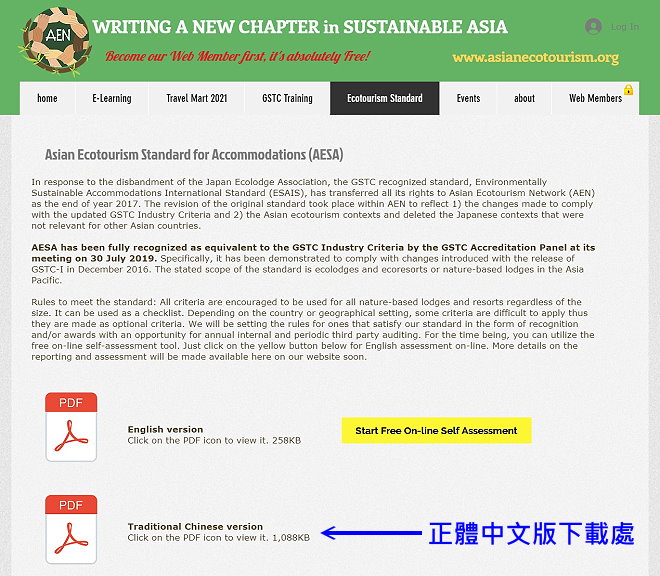 亞洲生態旅遊聯盟網站可以下載本正體中文版PDF檔(如欲索取word檔,請在臉書私訊留言。)
亞洲生態旅遊聯盟網站可以下載本正體中文版PDF檔(如欲索取word檔,請在臉書私訊留言。)
 吳理事在亞洲生態旅遊聯盟臉書社團公布
吳理事在亞洲生態旅遊聯盟臉書社團公布
20201221後記:
因為我們先為AEN翻譯「亞洲生態旅遊旅宿業標準」的中文版(正體版與簡體版),帶動其他亞洲會員國跟進翻譯該國語文版本,加速此標準的流通與推廣,2020年12月21日,收到AEN主席MASARU TAKAYAMA傳來的感謝狀。
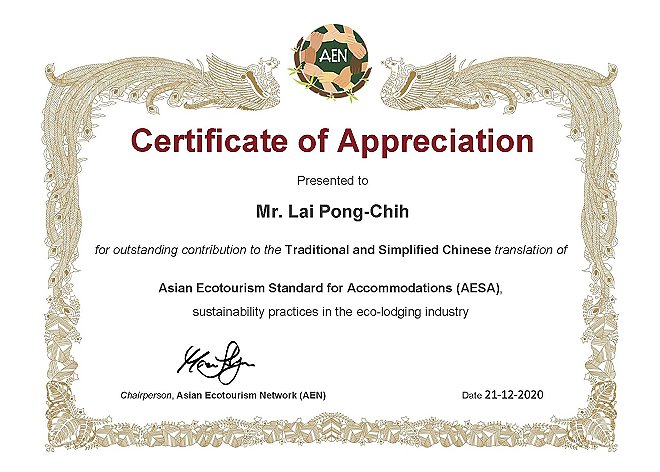

延伸閱讀:
全球永續旅遊委員會目的地準則2.0版(中文版)-20191206發布
從林務局自營太平山莊第三度獲得金級環保旅館標章看其他委外經營山莊的環保表現
本網誌「環保旅宿」、「生態旅遊或觀光遊憩」、「環境保護」、「旅遊地經營管理」專欄各文

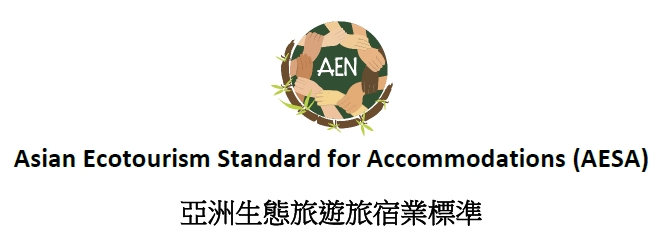
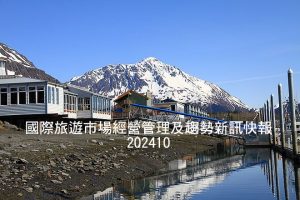



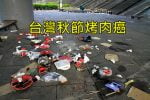
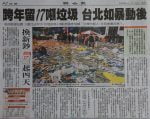

是的,政府可以從綠色採購政策面及實踐面引導民間正向發展環保旅宿,可惜政府一直沒有在這方面著力。
重點是要有實質誘因…
國際上如蘋果等大廠,能用採購壓力要求下游廠商落實節能環保或乾淨能源,否則不予採購,下游廠商為了能做到生意,就願意改變生產模式,變得更綠、更永續。
台灣本地能嗎? 撇開環保署不談,若政府部門能帶頭,在辦理旅遊活動、執行標案採購時,能優先選用綠色旅宿/餐廳/旅行業者,這也可能是一種迫使業者朝向永續的(由上而下的)力量。
臺灣有環保署推動的「環保旅館標章」,可惜環保署只當例行公事,沒有大力協助宣傳,所以環保旅館在臺灣起不了多大作用,對業者沒有吸客效益,投入者就少。 亞洲生態旅遊聯盟或世界其他國際級的環保旅宿標章,關照層面廣泛,是以永續旅遊的角度在對應旅宿業者處理環境、經濟與社會層面的議題,臺灣無論是政府或民間極少有這樣的關注。
這份準則要在臺灣推廣或落實,還是有可能的,不過歷程可能會久些。起碼要先須有個推動單位(如臺灣生態旅遊協會配合AEN執行),接著在臺灣宣傳、教育及認證,然後還要協助獲證者的行銷。(環保署的環保旅館標章就是根本沒有幫受證者行銷,業者沒能獲得認證後有形或無形(如企業形象)的商業效益。)
不過有個現實面,國際級的環保標章,除了是業者對環境保護的實踐與承諾外,在商業考量上主要是對國際行銷,而臺灣的生態旅遊入境市場是少之又少的(這又是另一個議題了),具國際水準生態旅遊度假村型態的旅宿業者很也很少,所以獲得亞洲生態旅遊聯盟或其他國際級環保旅宿標章,對業者沒有實質的幫助,這才可能是在臺灣難以推動或落實的主因。
感謝老師,這份文件太棒了~ 請問這有在台灣推廣或落實的可能性嗎?